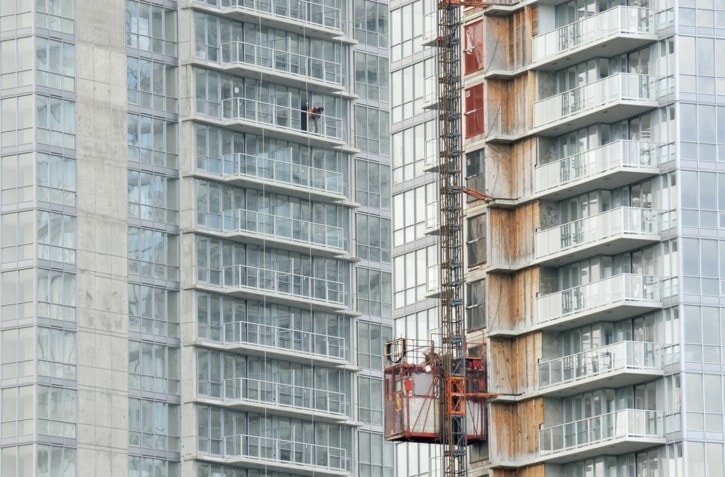Despite a B.C. economy that is still recovering from a recession, Surrey was home to more than a billion dollars in construction projects last year.
The city tallied $1.2 billion in building permit values in 2010, the fourth highest construction total in Surrey’s history.
Two-thirds of that growth ($804 million worth) was in residential development. Of that residential construction, high-density units are on the rise. Apartment building increased by 323 per cent over 2009 to nearly $90 million. Townhouse construction last year soared by 288 per cent to $167 million.
The prized commercial ($248 million) and industrial ($65 million) development made up 20 per cent and six per cent of the total, respectively.
Institutional development comprised the remaining seven per cent.
Don Luymes, Surrey’s manager of the community planning division, said the city is returning to its normal robust development.
“It really collapsed in 2009,” Luymes said.
“But on the commercial side, it was a good year – the best that I’ve seen.”
Commercial and industrial development bring in about three times the taxes as residential development, so they are seen as a healthier source of growth. At the same time, they draw on far fewer resources, such as libraries, community centres, garbage hauling and parks.
A staff report presented to council in 2001 – when housing stock represented 72 per cent of the total amount of taxes generated – indicated Surrey was not meeting sustainable levels.
“A ratio of 60 per cent residential and 40 per cent industrial and commercial is considered to be the minimum level necessary relative to the long-term health of the city,” the staff report said.
Burnaby draws 50 per cent from industry and commerce, Richmond 49 per cent and Vancouver 56 per cent. On the flip side, White Rock brings in only 10 per cent of its taxes from commerce and industry.
Currently, about 69 per cent of property tax in Surrey is generated by residential development, while the remainder comes from the commercial developments.
The amount of growth in each sector for 2010 is about on par with those historical taxation percentages.
Mayor Dianne Watts said good public policy at the onset of the recession created an environment where the city could bounce back.
An Economic Action Plan that included an investment zone in North Surrey helped create fertile ground for growth, she said.
Other cities throughout the region didn’t fare so well.
In Delta, building permit values dropped by 4.7 per cent in 2010, from $153.5 million to $146.3 million.
Again, residential development made up the lion’s share (65 per cent) of construction in Delta at $94.5 million, down almost $6 million from 2009.
Commercial development in Delta was up 55 per cent, bringing it to $8.2 million last year. However, industrial development dropped by almost 50 per cent west of Scott Road to $17.1 million.
In White Rock, construction values tumbled 7.2 per cent last year, dropping from $43 million in 2009 to $40 million last year.
Of that amount, only $1 million was commercial. White Rock currently relies on residential development for 90 per cent of its tax revenue.
